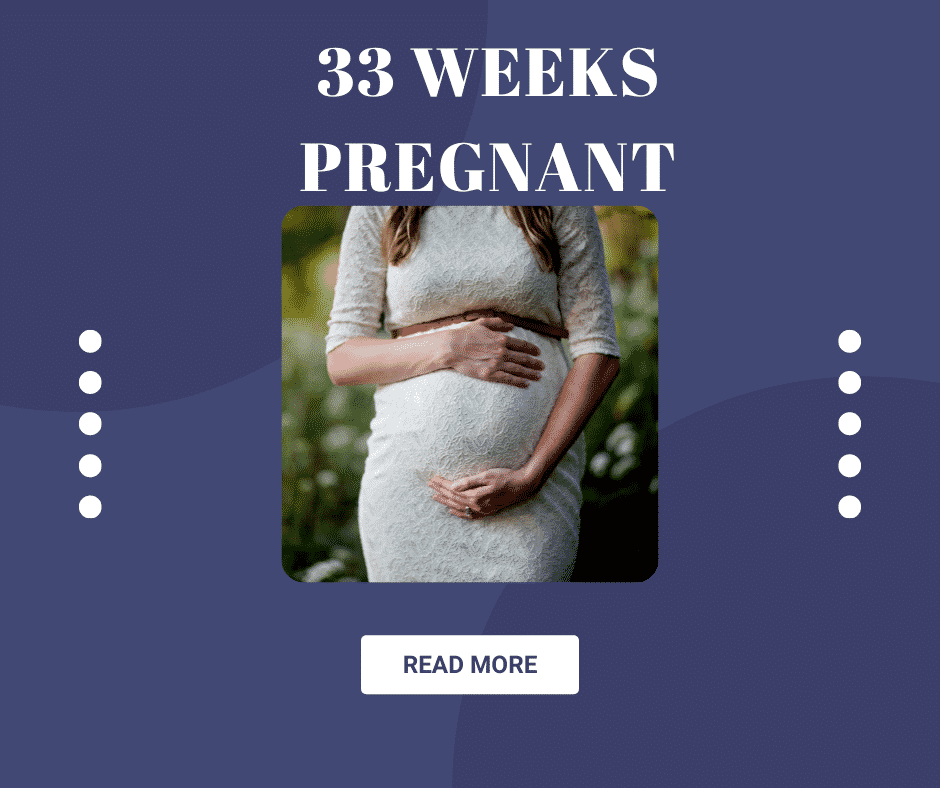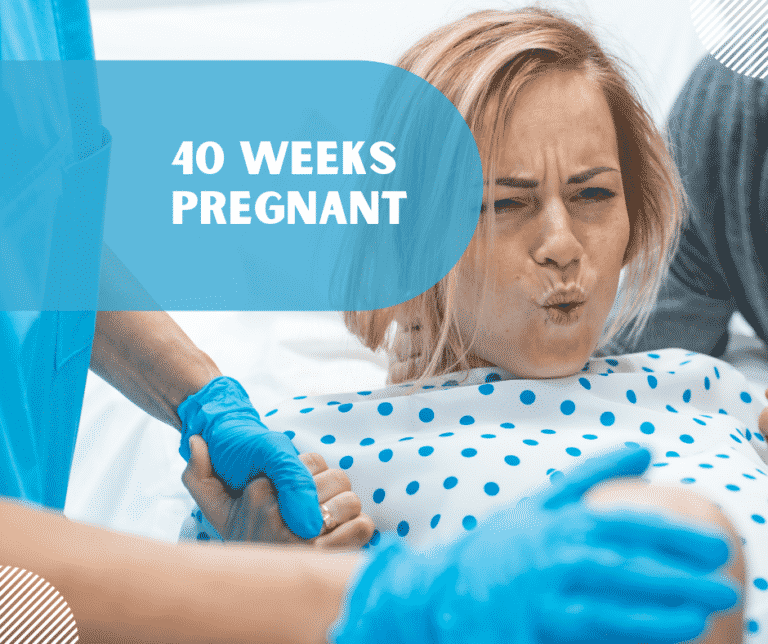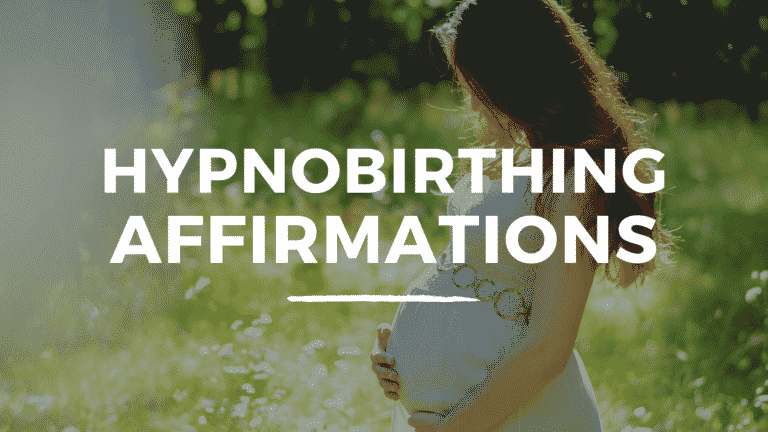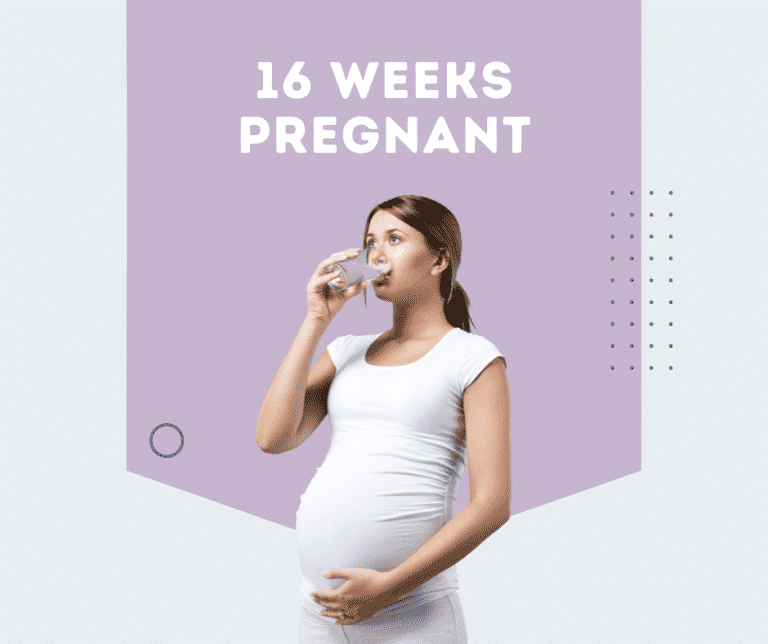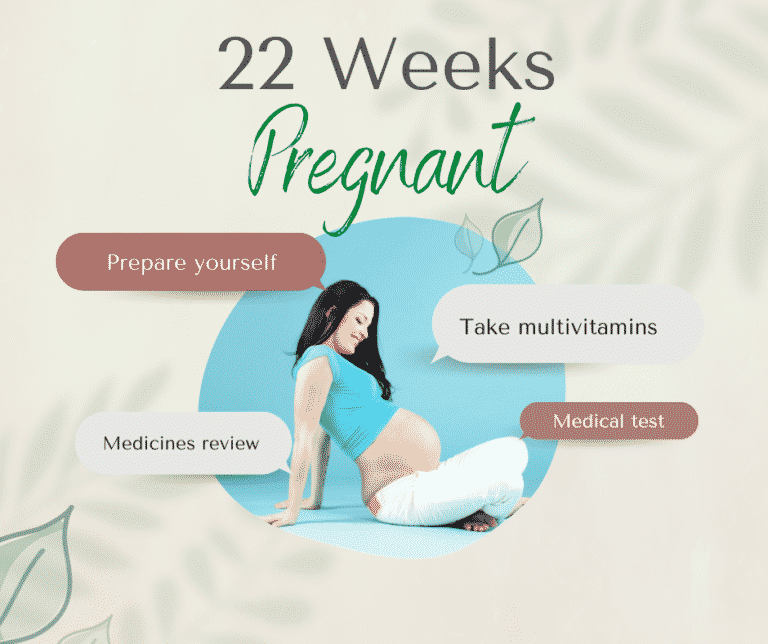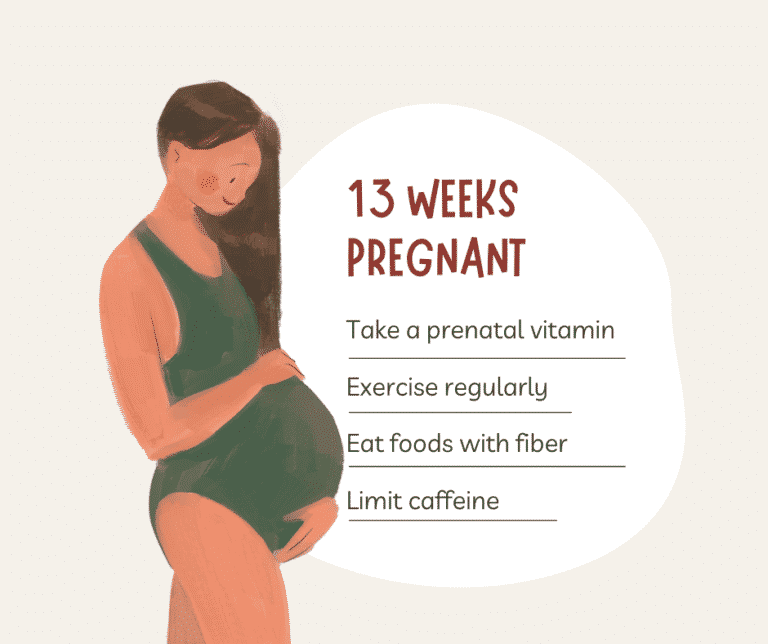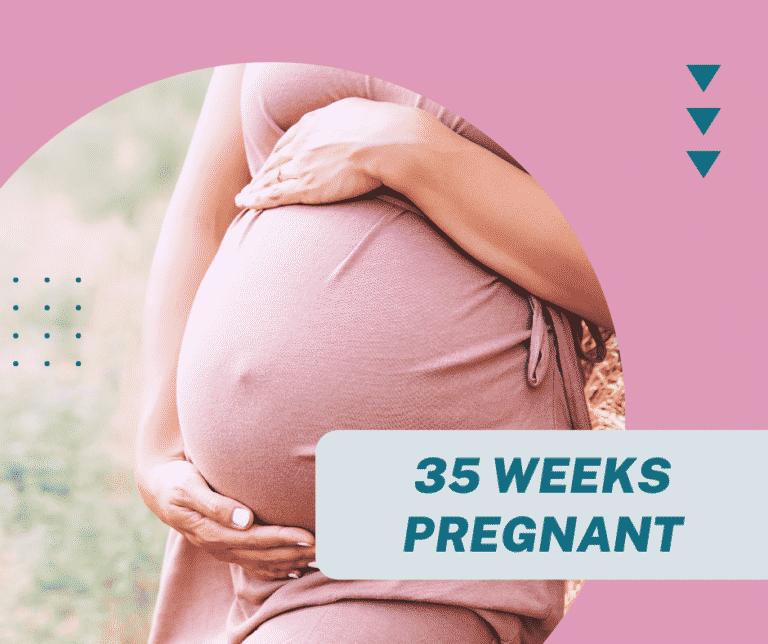33 Weeks Pregnant: Signs, Tips, Symptoms & Baby’s Development
Published on April 12, 2022 – Last Updated on October 23, 2022
You’re 33 weeks pregnant! Your baby is now the size of butternut squash and is starting to put on weight. They are swallowing amniotic fluid and have started to produce urine. The lanugo, a delicate hair covering your baby’s body, is starting to disappear. Fetal movements are becoming more coordinated, and your baby may even be kicking and punching you! You’re probably feeling tired and increasingly uncomfortable, but it won’t be long now until you meet your little one.
So in this blog post, we can cover symptoms and baby development with tips and frequently asked questions. So be with us and keep reading!
What to expect when you’re 33 weeks pregnant
During the 33 weeks of pregnancy, you may have noticed that you are gaining more weight and feeling more tired. Your baby is growing, and you are getting closer to your due date. The baby is now about the size of a cantaloupe, and they are continuing to grow and develop.
You may also notice some changes in your body, such as Braxton-Hicks contractions. These are false labor pains that can be painful but are not a sign that you are going into labor. However, if you are having regular contractions and getting closer together, this could be a sign of pre-term labor, and you should contact your doctor or midwife immediately. Read more about contractions: contraction timer, pregnancy contractions timer & how to time contractions.
Third Trimester
You are in the third trimester of 33 weeks of pregnancy. By now, your baby is fully developed and ready to be born. The third trimester is the “home stretch” before your due date. So take care of yourself in this trimester and keep going.
Learn more details about: when I am due and the belly stages of pregnancy week by week.
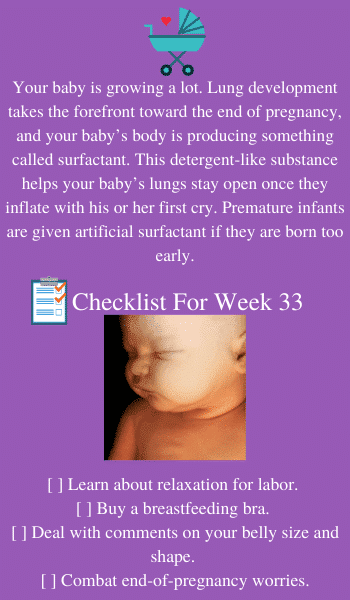
33 Weeks Pregnant: Your Baby’s Development
During week 33, your baby is developing and growing rapidly. Their bones are getting more robust, and they can open and close their eyes. You may be able to see your baby’s movements on the outside as they are now big enough to press against your stomach walls.
Baby Size:
At 33 weeks pregnant, your baby is the size of a cantaloupe.
Baby Weight:
They weigh approximately 3.75 pounds (1.7 kg).
Baby Length:
Your baby is about 16.7 inches (42.4 cm) long from head to toe.
Baby’s brain
Your baby’s brain is also growing and developing at a rapid pace. As a result, they can now process information and start learning.
Baby’s Structure:
Your baby’s head is now in proportion with the rest of the body.
Baby’s eyes:
Their eyes are open, and they have eyelashes.
Baby’s ears:
Their ears are developed, and they can hear you.
Baby’s Cord Blood:
The cord blood is now rich in stem cells, which can be used in the future to treat diseases. It is the symptom that their own immune system is in developing.
Baby’s skin:
Their skin is covered in vernix, a white, waxy substance that protects their skin from the amniotic fluid.
Baby’s movements:
Your baby is now big enough to press against your stomach walls. You may be able to see their movements on the outside.
33 Weeks Fetus
By 33 weeks, your baby is fully developed and just getting bigger and bigger. She’s now about the size of a cantaloupe melon, weighing in at around 4 to 5 pounds. She’s also getting less wriggly and more predictable in her movements, which can be a relief after all the flipping and kicking off the past few months. You may even be able to feel her hiccup!
All her organs are now functioning, although they’ll continue to mature and grow for the next few weeks. Her bones are also continuing to harden, although they’re still quite flexible at this stage.
If you’re 33 weeks pregnant with twins, you can expect each baby to weigh around 3 to 4 pounds. However, they’ll also be taking up more and more space in your womb, so you may feel increasingly uncomfortable as they get bigger.
You may be feeling pretty tired at 33 weeks pregnant. Your baby is growing so quickly, and your body is working hard to support her development. Make sure you’re getting plenty of rest and taking things easy where you can. 33 weeks is an excellent time to start thinking about what you’ll need for when your baby arrives,
Pregnancy Week 33: What are your Symptoms?
Moms-to-be have experienced some or all of the following symptoms during the 33rd week of their pregnancy:
- Braxton Hicks contractions.
- Tiredness and sleeping problems.
- Stretch marks.
- Swollen ankles and feet
- Pains on the side of your baby bump, caused by your expanding womb (“round ligament pains”)
- Piles.
- Headaches.
- Backache.
- Shortness of breath
- Leg cramps
- Increased fetal movement
Braxton Hicks contractions
These can occur any time from around 20 weeks onwards, but 33 weeks is often when they become more noticeable and frequent. Braxton Hicks contractions are irregular, painless tightenings of your womb muscles. They are usually short-lived and stop when you change position or walk around.
Tiredness and sleeping problems
By 33 weeks, you’re probably finding it difficult to get comfortable at night and maybe waking frequently to go to the toilet. You may also be experiencing vivid dreams. All of this can lead to disturbed sleep and fatigue during the day.
Stretch marks
Around 33 weeks, you may see stretch marks on your abdomen, thighs, breasts, or bottom. These pink or purple lines can appear as your skin stretches to accommodate your growing bump. They should fade after your baby is born.
Swollen ankles and feet
Your growing baby and the extra fluid in your body can cause swelling in your ankles and feet. This is usually worse at the end of the day and eases when you put your feet up. You may also have varicose veins (more prominent, bluish veins) on your legs at this stage of pregnancy.
Pains on the side of your baby bump
During the 33rd week of pregnancy, you may feel a dull pain or ache on one or both sides of your baby bump. This is caused by your expanding womb putting pressure on the muscles and ligaments that support it. The larger your baby grows, the more squashed into your uterus they become. The pain is often worse when you change position, stand up after sitting for a while or walk around. You can use a pain-relieving spray for a better feel!
Piles
Piles are swollen blood vessels in your anal area. They can be painful and may bleed when you poo. Pregnancy hormones and extra pressure from your growing womb can cause piles. You can relieve the symptoms by eating high-fiber foods, drinking plenty of fluids, and using a stool softener if necessary.
Headaches
33 weeks pregnant women may suffer from headaches. This can be due to tension, dehydration, changes in blood sugar levels, or lack of sleep.
Backache at 33 weeks pregnant
Backache is a common symptom during pregnancy and can be caused by your growing womb putting pressure on your spine and muscles. You may also find that existing back problems worsen at this stage. To ease backache, try wearing supportive shoes, using a pregnancy pillow when you sleep and taking regular breaks during the day to stretch your back.
Shortness of breath
33 weeks pregnant, shortness of breath can be caused by the extra weight you’re carrying, making it harder for your lungs to work correctly. You may also find that your bra feels tighter as your breasts grow in preparation for breastfeeding.
Leg cramps
33 weeks pregnant women may experience leg cramps, often worse at night. Try stretching your muscles and massaging them with a tennis ball to relieve them. You should also make sure you’re drinking plenty of fluids and getting enough magnesium in your diet.
Increased fetal movement
At 33 weeks, you may notice an increase in fetal movement. This is because your baby is running out of space in the growing uterus/birth canal to move around and make the most of their loft space.
Braxton Hicks contractions
33 weeks pregnant women may experience Braxton Hicks contractions, which are irregular, painless tightenings of your womb muscles. They are usually short-lived and stop when you change position or walk around.
Self Care Tips for 33rd Pregnancy Week
There are a few key things you can do to ensure a healthy pregnancy. Here are a few tips:
- Educate yourself.
- Make a plan.
- Make sure to eat a balanced diet and stay hydrated.
- Get plenty of exercises.
- Avoid smoking, drinking, and drug.
Educate yourself
If you want to have a healthy pregnancy, it is essential to educate yourself about what to expect. This way, you will be better prepared for pregnancy’s physical and emotional changes. You can find information about pregnancy in books, online resources, and your healthcare provider.
Make a plan
While it is essential to be flexible during your pregnancy, it is also helpful to make a birth plan. This will help you and your healthcare team be on the same page about your preferences for labor and delivery. When making your birth plan, include your preferences for pain relief, who you would like to be present with during the birth, and your thoughts on circumcision.
Eat a balanced diet.
It is essential to eat a balanced diet during pregnancy. This means eating plenty of fruits, vegetables, whole grains, and lean protein. It would be best if you also drank plenty of water to stay hydrated. Avoid sugary drinks, caffeine, and alcohol.
Get plenty of exercises.
Exercise is vital for a healthy pregnancy. It can help to improve your mood, reduce stress, and keep your energy levels up. Walking, swimming, and prenatal yoga are all great exercises during pregnancy. However, talk to your doctor before starting any new exercise routine.
Avoid smoking, drinking, and drugs.
Smoking, drinking alcohol, and using drugs are harmful to your baby. If you are pregnant, it is vital to avoid these substances. If you need help quitting, talk to your doctor or midwife. They can provide you with resources and support.
Use affirmations: You can start using pregnancy affirmations, birth affirmations, or hypnobirthing affirmations to have a calmer pregnancy and birth.
Advice For Partners: 33 Weeks Pregnant
It is essential to be supportive and understanding during this time. Here are some tips on how you can support your partner during the 33rd week of pregnancy:
Encourage them to express their feelings:
It is usual for pregnant women to feel a range of emotions, and it is essential to allow your partner to express their feelings. If they are feeling anxious or stressed, offer them reassurance and support.
Make sure they are staying active:
Pregnant women need to stay active and moving during pregnancy. Encourage your partner to take walks, do light exercises, or participate in a pregnancy yoga class.
Help them with household chores:
As your partner’s pregnancy progresses, they may feel more tired and less able to do everyday tasks. Offer to help out around the house, such as doing the grocery shopping or cooking dinner.
Doctor’sDoctor’s Visit:
During week 33, You may have to visit your doctor more frequently to check on the progress of your pregnancy. You may have many questions during this time, so be sure to ask your doctor about anything that’s on your mind.
During this time, maybe the doctor will ask you for an ultrasound. The ultrasound will show the baby’s movements, breathing, muscle tone, and the amount of amniotic fluid. Your fetus size also increases. 33 weeks pregnant, you are likely to find that your clothes feel tighter around the waist. And Some 33 weeks, pregnant women get the “nesting.” So you have to discuss all these things with your doctor also.
FAQs
Is the baby fully formed at 33 weeks?
By 33 weeks, your baby is fully formed. The 33rd Week Of Pregnancy Only 7 more weeks until your baby arrives. Their organs, muscles, and bones are developed, and they just need to grow and mature. Your baby is also getting more fat deposited on their skin, which will help to keep them warm once they are born.
Can labor start 33 weeks?
Labour can start as early as 33 weeks, but it is more common to begin around 37-39 weeks. If you go into labor before 37 weeks, it is considered premature labour.
What position should the baby be in at 33 weeks?
By 33 weeks, your baby should be in the head-down position. This is the ideal position for labour and delivery. Babies born now have a good chance of survival but are still premature.
Other Pregnancy Weeks:
- 1 Week Pregnant
- 2 Weeks Pregnant
- 3 Weeks Pregnant
- 4 Weeks Pregnant
- 5 Weeks Pregnant
- 6 Weeks Pregnant
- 7 Weeks Pregnant
- 8 Weeks Pregnant
- 9 Weeks Pregnant
- 10 Weeks Pregnant
- 11 Weeks Pregnant
- 12 Weeks Pregnant
- 13 Weeks Pregnant
- 14 Weeks Pregnant
- 15 Weeks Pregnant
- 16 Weeks Pregnant
- 17 Weeks Pregnant
- 18 Weeks Pregnant
- 19 Weeks Pregnant
- 20 Weeks Pregnant
- 21 Weeks Pregnant
- 22 Weeks Pregnant
- 23 Weeks Pregnant
- 24 Weeks Pregnant
- 25 Weeks Pregnant
- 26 Weeks Pregnant
- 27 Weeks Pregnant
- 28 Weeks Pregnant
- 29 Weeks Pregnant
- 30 Weeks Pregnant
- 31 Weeks Pregnant
- 32 Weeks Pregnant
- 34 Weeks Pregnant
- 35 Weeks Pregnant
- 36 Weeks Pregnant
- 37 Weeks Pregnant
- 38 Weeks Pregnant
- 39 Weeks Pregnant
- 40 Weeks Pregnant
- Birth Plan
- Baby Due Date Calculator
- EDD Calculation
- how many weeks pregnant I am

